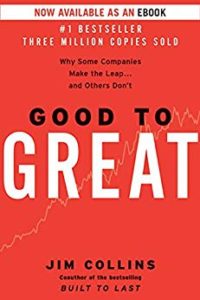
Jeff Lee, co-founder and CEO of Measurable Solutions, knows what it takes for an owner to achieve greater revenues, profits, stability, freedom, and growth. What does it take? A team. An owner can never do it by himself. An owner has to have a POWERFUL team around him to carry out his vision. With a powerful team, an owner can expect to, in Jeff’s words, run a company from any distance which continues to grow and run on its own and provide the owner the freedom to do what he/she wants to do. Is that not every owner’s dream? Jeff and I break it down into some of the simple things necessary to do just that. We say its simple, but it takes the discipline and effort to groove these teachings in. Measurable Solutions is around to help you out.
—
Listen to the podcast here:
How To Build A Powerful Team with Jeff Lee: The Key To Stability And Freedom
I have Jeff Lee, the Cofounder and CEO of Measurable Solutions based out of Clearwater, Florida, Seattle and Vancouver. It has been around since 1999. It has made its mark on the physical therapy profession. In that, it’s been on the Entrepreneur Magazine’s Hot 100 list and has set an industry standard for its type of executive training in the physical therapy field for executives and owners. Many of Measurable Solutions clients are Inc. 500 award winners in the past and several have gone on to win Practice of the Year in Physical Therapy. Jeff’s objective is mainly with his clients to get them to be able to run their businesses at any distance, creating the freedom to do what they want. He’s achieved that with hundreds of clients over the years.
In full disclosure, me and my partner, Will Humphreys, have trained and used Measurable Solutions’ teachings for a number of years and have significantly grown our businesses to the point where we sold our clinics in the last few months. Thanks to the teachings, training, help, support, whatever you want to call it, from Measurable Solutions and their consultants. A huge kudos goes to Measurable Solutions for their help with our companies. Jeff and I are going to talk a little bit about what it takes to build a powerful team around you, whether that’s staff or executive team members. We have a little bit of a conversation going back and forth. He lays down some of the laws that are necessary to get those staff members and those team members up to speed rather quickly, but also how to develop your internal staff into greater leaders. I think you’d get a lot out of it.
—
We’ve got Jeff Lee from Measurable Solutions with me. Jeff’s got a ton of physical therapy experience working with physical therapists and clinics, working through and with Measurable Solutions. Me and my partner, Will Humphreys, worked with Jeff through Measurable Solutions for a number of years to get to where we’re at. Jeff, thanks for coming on with me.
You’re welcome. It’s my pleasure to be here.
I’ve been anxious to have you on. We want to talk a little bit about building powerful teams, specifically executive teams for clinic owners in the physical therapy space. Do you mind sharing a little bit about where you came from? What got you to this point and led you to Measurable Solutions and working with physical therapists?
I’ve been working in this industry in terms of training executives and private practice for about 38 years now. I started Measurable Solutions back in my carriage house in Clearwater, Florida with my partner and that was back in 1999. My partner is a physical therapist and I said, “Why don’t we promote to physical therapists?” He had a fairly big practice in Cincinnati, Ohio and he said, “I already tried that and nobody responded.” I said, “That was because you probably had the biggest practice in town and everybody hated you.” We started promoting to about 5,000 names. At that time there was probably about 24,000 to 25,000 private practices in the US. We started on the East Coast with 5,000 names. My partner put together a brilliant newsletter that went out to those 5,000 names and the phone started ringing off the hook.
Did you see immediate responses to your newsletter or did it take a few trials?
We were sending out postcards with very little results. There were few leads that came in. People were interested in doing our new patient course. We sent out the newsletter and on the very first week, we got 75 calls. Then there were about 45 calls the next week. We had this off of that one mailing. It was a huge return. At that point in time, we knew we hit the mother lode.
Is there something that you learned from that that you can share with physical therapist nowadays? Whether it’s your approach or switching from postcards to newsletters or the content within them.
Postcards are great. It’s a nice little reminder of who you are. It’s more like an advertisement. Whereas the newsletters are more PR because before somebody can make a decision, they have to understand who we are. With the newsletter, you have a lot more to say. You can talk to them on their reality level and increase the reach and understanding. As a result of that, we sent out the newsletter and the postcards. That was the combination. One newsletter a month and postcards every week. Eventually, we got into the Midwest and then on the West Coast as well. We are mailing to the entire list every week.
A true owner is someone who can run their company from any distance, which continues to grow and run on its own, and provide him/her the freedom to do what they want to do. Click To TweetNow you’re working in Clearwater in Seattle, right?
Clearwater, Seattle and Vancouver, British Columbia.
My podcast is all about helping physical therapists recognize or achieve stability and freedom as owners in their practice. You’ve been helpful in helping hundreds of people do exactly that. Building up their clinics to the point where the owner can not only wear their executive hat to become executives instead of just physical therapists, but also to get to a point where there are true stability and freedom in their practice as an owner. A lot of it has to do with building up that team around you.
That’s very much it. We’ve worked with thousands of practices that have come to our office and they come in all shapes and sizes in all different locations. Everybody that comes in feels that their practice is unique and their circumstances are unique in their area. That’s minorly true but not majorly. The information that we give our clients would work if your practice was on Mars. It didn’t matter. Everybody would say “You don’t understand, in my area, we have more ignorance per capita than the United States.” It’s not true. You have to improve your hiring techniques. Your job as an executive is to continually work yourself out of a job as a practice owner. Number one, you’re a PT but more senior to that is that you’re a business owner and you’re an executive. You’re the CEO of that practice. Even if you only have two other staff. At that point, you have to start building it up.
We’ve come up with a goal for our clients, which many of our clients have achieved. It goes like this, “An owner who can run the practice at any distance and have it expand on its own, creating more freedom to do what you want.” I’ve read that and asked hundreds of practice owners if they’d like that. There’s nobody who wouldn’t want that. We feel it’s a very worthwhile goal, which gives ultimately people more freedom. It’s probably why they got into being in private practice and then they realize “What did I do? It probably would be easier for me to be just an employee somewhere.” If they have the proper tools it’s a piece of cake. I say it is a piece of cake, you have to roll up your sleeves and learn a lot of basic things about business and how to run a team. How to manage it and what’s the correct way of managing. There are about a billion ways to do it wrong and there is one way that is majorly correct. We’ve searched high and low to come up with that technology and we found it. It works like gangbusters. It works 100% of the time.
If you truly implement it.
We always give a guarantee it works but you’ve got to guarantee you’re going to apply it.
That’s the case with anything. The beauty about your system and what you guys train people on is organizing your business, organizing the structure and delegating the necessary aspects of business ownership to the property executives so that you aren’t doing it all on your own as an owner.
That’s where hats come in and play. The term hat has caught a lot of usages. I hear a lot of people saying it now. That came from the railroad industry where the brakemen wear a different kind of hat than the engineer and so on. In your business, you have several hats and they have to be defined precisely. The most important part about a hat and knowing this and building a team is everybody knowing what their product is. It’s important for the business owner to know what the product is too. I’ve been in hundreds of practices throughout my career and I always ask the owner, “What’s the product of your practice?” They look at me sometimes with a dumb look or sometimes they’ll give me an idea of what their product is but it’s not a product. It’s something that they do.
Like providing physical therapy.
What’s the end result of that? The definition of a product is a finished or completed thing that has exchange value. Unfortunately, on the job force now when you’re out there and you’re interviewing new prospective staff, whether they be physical therapists, as PTAs or admin staff, 75% of them don’t know what a product is, which is amazing how they even get by. I always ask a person, “What kind of products have you produced in your last job?” You take a look at the sports industry. They’re very much in tune with that. They’re only going to hire players that have stats. Whereas most business owners will hire people if they can fog up a mirror.
That’s true especially for those of us who are looking for physical therapists. We’re just looking for a warm body.
A lot of times it’s in desperation. There was an emergency created because there wasn’t anybody looking for PTs when they should have been. They put it up to the last minute, “We got to hire somebody because we are getting a flood of new patients in.” It’s always too late. It’s horrible. Many times, you’re better off not hiring somebody if they’re the wrong egg.
That could take months, if not a year or more sometimes to overcome someone that isn’t a good fit that can poison your team. I’ve experienced that myself.
It has devastating effects especially when you have a smaller group. The effects can be very not as devastating but they still can have the potential to be super devastating for a bigger group. You get one bad egg and you get a wrong guy in there whose intentions aren’t very good. They can taint a group.

How do you find those people? How do you develop then a powerful team? It’s a matter of planning and hiring the right people but what is your instruction for us? How do we create a powerful team around us so that we can become that owner that can run the company at any distance that grows on its own and get the freedom to do what we want?
One of the things is, “Can they produce a product?” When a person comes in, I give them something that is not too hard, not too difficult to produce or it is something that’s needed. Let’s say you’re hiring somebody at the front desk or in your front office. You need somebody who has some skills with people. I’ll give them a list of people that you need to reschedule or get reactivate. See if they can fill that book up and have people come in.
As part of the interview process, you’ll have them do an on-the-job interview.
I give them a little trial for a couple of days, sometimes three to really tell you. I got that from Nordstrom. When Nordstrom hire people, before they bring them on, they have to go around to each manager in the store of each department. That person has to give them a thumbs up. It has to be 100% thumbs up from every department head before they bring that person onboard.
That means the department heads worked with them in order to get to that point.
They worked in there. They worked side by side. They saw how fast they could pick up the job. They saw how their people skills were. Were they polite, did they have good manners or were they rude? Did they have good manners while they’re carrying a dagger behind their back?
I’ve had applicants come through the process. They’ve been on the phone, they’ve done a group interview and they’ve done a one-on-one interview, and I put them in the on-the-job interview. I’m thinking the entire time this person is going to fly on through. What happens is when they get amongst your peers and not trying to impress somebody, they let their guard down a little bit and show who they really are. The things they talk about, even their language sometimes and more importantly, how they interact with the patients and fellow employees and attempt to get their product is huge. It’s very revealing.
Those are the two main factors in selecting the right person for your team. Number one, can I produce a product? Number two, what are they like when the mask comes off? When we were dating in high school, you go out for the first couple of days and you think you’ve got your dream person. Then after sometime, you start finding out who they really are. That’s what you want to get stripped off as soon as possible before you commit to hiring a person.
Would you use the same protocol for say you’ve had somebody that’s worked with you as a staff therapist for a number of years and you think they’re going to be a great manager or clinic director or maybe even a marketing director? Would you utilize the same process to test those people internally who are already with you?
I see a lot of guys make mistakes along that area. They get a good person who can produce and they are a production machine. Then they put them on an executive position and they fail miserably. What you have there is a worker orientated type of executive. An executive is somebody who knows how to get the job done but doesn’t do the work. He gets others to get the work done. You’ve got to see how good are people at getting others to get jobs done. That’s your measuring factor whether the guy’s going to be a good executive or not. You don’t want somebody who’s going to piss everybody off either. Some people’s management skills are like that of Adolf Hitler’s or something like that. That’s not the way to do it. You’re trying to increase the affinity. You’re trying to increase everybody’s participation. You’re not going to get that by yelling at them. You’ve got to have somebody who’s persuasive but is right in most of their decision-making process and has some leadership skills that people want to follow.
How would you measure that? Have you recommended certain tactics or techniques to use to measure some of your internal staff’s capability of moving up the ranks?
I do stuff like leaving them in-charge for a couple of weeks. Somebody goes out of town or somebody goes on vacation or whatever and then that person steps in. You can see what they’re made of before you committed like, “We are now officially posting you as the Grand Poobah over this area.”
Especially with the expectation that so and so is gone for a couple of weeks but your job is to not let anything fall through the cracks. We’re going to act like that person’s never left. Would you be upfront with them saying, “This is a trial,” or not so much?
Not so much. The other thing is you’re going to know and especially I like to do things with my staff. We go and do outings and different stuff like that. You start to see people who are the ringleaders. You start to see who the Alpha people are. That’s who you want. You want somebody who’s not rubbing people the wrong way but they can bring the group’s morale up. That’s important that you have somebody, then the rest of it can be trained in. That’s the other thing in terms of income. One of the definitions of lost income is the amount of money that you could have made but you didn’t. Where I find that money going out the door is basically not training their staff. You take a look at where the income comes from. There are two laws. Hatting equals control, hatting is another word for being trained on one’s job, and control equals income. If you want to increase income, you have to increase control.
There are about a billion ways to manage a business wrong and there is one way that is majorly correct. Click To TweetHow do you increase control? By training and getting more skilled at the job. Your front desk, if they know how to keep that appointment book full and get 98% of them coming in at the scheduled time, it takes some skills, that takes some practice and that takes some training. The other thing is that you have to drive in on what the purpose is of the practice so that people can get behind what you’re doing and it makes more sense. Not only do they know the practice’s purpose but they also know the purpose of their job and how it fits in.
Would you say if those people are properly trained on the purpose of the company, their job and they know in detail the product they are to produce in their job to the point where they have control, that’s going to increase your income, based on the laws that you just laid out? The training doesn’t have to be severe. It’s making sure they understand the purpose. They understand the product and then the step-by-step parts of it start falling into place when you have the right person. The training is important but if they’re the right person, they’re going to follow those training and find even better ways to make things happen.
Especially if they have the purpose. Do you know what the formula for living is? It’s having and following a purpose. To what degree are people living? How strong is their purpose? It has to be super strong plus they have to demonstrate it in life and on their job. Somebody who has a strong purpose is dedicated and who is aligned. They get up in the morning. They’re excited about coming to work on the effects that they’re going to create because they have such a strong purpose. Their degree of professionalism is going to be a lot higher than most. They’re not going to settle for being an expert, they’re going to be a super expert.

It goes back to what you hear some consultants talk about. I know in a popular book, Good to Great by Jim Collins. He always says, “First who, then what.” Once you find the right person, and maybe you can share your experience with this, when you have that right person that’s already in your company and you recognize that they’re rock stars. It’s almost like you can drop them into other departments and know that they will continue to succeed.
I have a couple of key execs who are like that. I can pretty much put them anywhere. The reason for that is they’ve been trained on this technology more than most.
Your training isn’t just one-day things. You’re spending, would you say months?
It’s equivalent to getting an MBA. An MBA where you have to get results and they have to prove it. It shows up in their stats. It’s like a good ballplayer. As a coach, you’re going to invest more training into that individual because you know you’re going to get more mileage out of it. I come up with another law here is I always flow power to the direction that I depend on power. If somebody is proving themselves to be very good. They’re getting results and very competent individuals, I will flow them power. Like more money, more time, more training, more assistance and more everything. I want them to have longevity on the job. I’m going to give them assistance. I’m going to have somebody go get their lunch for them if needed and all those kinds of things. You flow power to power, that’s basically it. That comes from a law from Aaron Hubbard. That’s how you can grow a group is you flow power.
One of my consultants used the term like, “Feed your tigers and shoot your dogs.”
I was looking at the Seahawks playing the Rams and it was a tight game. If you do something wrong, you get penalized. If you do something right, you get a bonus. These guys were following one of the main rules in business, which is you get what you reward. When you reward an up-stat or somebody who’s a high producer, you’re going to get more. If you reward a down-stat or somebody who doesn’t produce very well, you’re going to get more of that too. You penalize down stats and you reward up stats. If the government did that, we wouldn’t be in the pickle we are.
That goes back to when you have what you might consider B and C players around a bunch of A players, the A players are going to leave. They could go two ways, they either become B and C players themselves but if they’ve got a strong purpose, they’re going to find some other place where they can succeed.
That’s where good leadership comes in. If you have your A players and you have some B and C players, the way you manage those B and C players is how you’re going to keep the A players in the game. There again, you flow power to the direction where you depend.
What is your recommendation when a group comes to you and they figured out that they’ve got a ton of B and C players? Maybe they have one or two A players. Yes, reward them, help them out as much as possible, but what do you recommend to the Bs and Cs?
It’s like you have to fish or cut bait at some point in time. If you based off of statistics, if a staff member is costing more money than they’re making you, that’s a curtain call but you’ve got to know how do you measure that? How do you know when somebody is viable or worth their weight? What production level? For instance, you had a guy where you were getting 25 new patients a week. Then you hire this person who’s a PR and marketing guy to drive in more patients and now you only have 20 new patients. He’s gone. He’s costing money. If he comes in and now you’ve got 50 new patients. He has to do more than 25 in order to be worth anything. That’s how you measure something like that.
If he does well, then flow more power to him. With those Bs and Cs, it’s going to be important to have those one-on-one conversations and be upfront with them. You’ve got to make sure they all understand what their purpose and their product is and then have an accountability meeting that says, “What’s your purpose and your product? What’s your key stat? What’s one way to measure if you’re doing well for me or not?” Whatever the owner decides that number is and has agreed to with that employee, then they need to look at it objectively and it’s not an emotional conversation at that point. Are you pulling your weight or not?
They either are or they’re not. In some cases, you get a guy and he can get some products but they’re far inferior between and they’re not such good quality. You can turn that guy around that has some potential or at least an inkling by getting them in on what their real purpose is. Getting them to understand what their product is and all the sequence of steps in order to get it and then pump up the volume.
Many times, you're better off not hiring somebody if they're the wrong egg. Click To TweetSometimes that clears things up. Once they’re clear on that and you invite them, “We want you to stick around. There’s a reason we hired you. Can we agree that if you start doing these things and start producing, we’re going to be together for a long time?”
If you do all that and you still have goose eggs, then you’ve got to push the eject button.
I’ve never fired someone too quickly. I’ve never looked back and thought, “I should have kept those people around a little bit longer.”
I err in that direction of keeping somebody on too long just like everybody else. The reason for that is because you try to give people chances. The reason why you hired them is that you thought they’d worked out. When it becomes plain, you have to cut bait quickly and not waste around on it and not hesitate. The other thing is some people only hire when they need staff. You should continually be taking applications as a business. Always, never stop hiring.
Never take the ad off. You always want to keep that inbox full of résumés. It helps so much. It lessens the fears of what might happen in the future. If it allows you to cut bait and do some tuck greeting. Just to have some of those résumés onboard at all times. We’ve used that principle in the past and it’s allowed us to turn people over quickly when you get that sudden leave. Someone suddenly drops their notice and doesn’t even give you two or four weeks as might be a professional etiquette and say “We’re going to hire somebody here by next week. We won’t miss a beat.”
Following that practice has been huge for us in our practice in the past. That’s been very comforting and maintains the stability of the practice as you do that. That can be a little bit harder with physical therapists but once you get the pipeline rolling, you can have two or three people who are on the bench per set ready. Maybe they’ve already had on-the-job interviews. Maybe you’ve kept in constant contact with them so that even when your physical therapists go down, you can return to some of those people and see if they’re ready to take on a job with you.
I have known practices that did just that. They had all kinds of applicants ready to come in and they had a mass exodus. They had a bad egg in the group, which is like a white mutiny. Within one week they were right back to slugging. The guy lost about 50% of the staff. I can’t stress that enough in terms of being a good executive is having a personnel pool or staff ready to standby. It is like having your national reserves.
We’ve been straight up with those people who are waiting in the wings like, “We don’t have a position for you right now, but we’d like to stay in contact with you in the future. If you move positions or if you’re looking for something, you’re ready to move away from your company or a position that you’re at, will you please stay in touch with us?” We developed relationships with these people. When tides turn and they typically do, then we’ll find a position for them. Sometimes even if we don’t have a position for them, we’ll bring them on anyways. If we think so highly of them, we’ll find a place for them somewhere.

Sometimes a person can get caught in the rut in terms of hiring people for certain positions. They hire one person, they don’t work out. They hire the next one, they don’t work out. The third one finally comes along and it works out. They wasted six, sometimes nine months of production in that area. Why not hire them all three at once and then the best man wins? That creates some healthy competition amongst the three people there because they know if they don’t cut it, it’s curtains for them. Sometimes they’ll see that they’re not going to be able to compete with the people who are there. They’ll self-eliminate. Let’s say you’ve got some potential. You can see that the person can produce products. There are three different kinds of hats that people should have on getting somebody onboard. The first hat that they should have is an instant hat, which is usually like one page.
You do these things to cover the basics of your position.
Something that can be grooved in on a guy in fifteen minutes or maybe half an hour. We call that an instant hat. They do the instant hat and they get more productive and go, “That’s awesome.” Now you give them a mini-hat. The mini-hat is a little bit lengthier. It might take a couple of days full-time to get through it. You feed it to them over a period of time. They eventually get their mini-hats on. It gets them a little bit more in detail of what their duties are and how to handle this and that. How to handle an irate caller or different things like that. Once they’ve got that and they’re doing pretty good, then you give them a full hat. It will take some time to get through but it’s every part of the hat, soup to nuts.
Every possible scenario, every possible situation and your approach for all of them.
Let’s say you have somebody who’s doing great there. They start doing other hats of their neighboring positions in the clinic. Pretty soon, they do all these four hats and they know every hat in the organization. Now, you’ve got somebody who has the makings of an executive.
The higher the willingness of staff member has, the better staff member you have. Click To TweetThen they start training the next person to come up there take over their hat. That’s essentially what you do.
The ideal scene is every staff member in the practice knows how to do everything top notch. They know every hat in the organization. How flexible could that be? You’re going to have each of those individuals who have specific responsibilities like over the admin, the hiring or over the production or somebody to do the marketing and PR. If you have everyone trained to do marketing and PR, then they can all shift over there and help out in marketing and PR and drive the public in. Drive all the new patients in and then you’ve got everybody who can deliver in there and everybody’s in there is pitching in on the delivery.
I’m not alone in this but I’ve had plenty of techs who would cross train to the front desk. When you lost that front desk person it would be huge to have a tech that could cover the front desk. I even had some of my PTA do some tech duties but they’d also do front desk duties and know how to call insurances and whatnot. In times of trouble, they would more than happily jump in and made for some huge flexibility.
That would be an ideal scene they have to get. That gives you the importance of these hats and putting those hats together is usually a big task but it’s a very worthwhile task if the hats are done fully.
The instant hat, mini-hat, full hat, those are things that can be compiled over time not just by the owner. The people who are performing those jobs well, if you could ask them to take fifteen minutes to start writing down some of the things that you do. Maybe they start doing that on a weekly basis and over the course of a few months, you’re going to have a solid hat.
You give that only to your rock stars.
The only ones who are producing. Not the people who you’re going to fire next week.
You give your competition that hat.

Is there anything else you want to share with us about building a power team?
There are three factors. There are three classes of staff. The one that you keep around is your willing staff member. You’ve got to take a look at it. Are they willing to do whatever? You don’t want somebody who is, “I’m sorry, I don’t do windows.” That’s not a willing staff member. You want somebody who is willing to do anything. If they can’t, they’re eager to learn how. That’s a willing staff member. Then you have the other two, which you want to get rid of. That’s the defiant negative and the wholly shiftless. Which means wholly is entirely and totally all together. Shiftless is lacking resourcefulness or inefficient or lazy. Your person who is not quite there, lazy, wholly shiftless, you don’t want those guys. Your negative defiant guys are you go black and they go white, you go fast and they go slow. They’re always opposing everything.
Those guys are pretty obvious. It’s the wholly shiftless where you’re giving them another chance, “Let’s move them to this position. Let’s give them more training. Maybe we weren’t clear the first time. Maybe there’s something going on at home.” There’s always an excuse or you always want to give them a second chance, third chance or fourth chance. Those tend to be the wholly shiftless. They’re not as easy to spot sometimes as the negative defiant.
What it is, is if you’ve got somebody who is saying yes to you and they actually mean no. It’s the individual what we call non-compliant. You give them an order, you give them a task to do and they never get it done. Not right off the bat is that a wholly shiftless person, sometimes they have too many things to do. They’re doing them all and they can’t get that thing done. If you give it to somebody, an individual who is not overwhelmed, who needs more work to do and you give them a task to do and they don’t do it and they say, “I’m all over it. I’m behind it 100%,” and they never get it done.
They’ll come back with lots of excuses.
I found it better to just push the eject button. As an executive, you’re there to cultivate willingness. The higher willingness staff member you have, the better staff member you have. I treat them good, pat them on the back, buy them candy, get flowers or whatever.
Thanks for your time, Jeff. It was nice talking to you again.
It’s my pleasure.
Thanks for your insight on helping people develop that power team to get the owner where they want to be. I love what you said, the owners that can run a company at any distance continues to grow and run its own and freedom to do what you want. I love that definition of an owner. Thanks for your time, Jeff. I appreciate it.
You’re welcome. Thank you.
Important Links:
About Jeff Lee

Jeff F. Lee is Co-Founder & CEO of Fortis Business Solutions, an international business training and consulting firm engaged in the areas of business management, product de-bugging, ethics, PR, marketing, sales training, succession planning exit strategies, helping companies in turnaround situations. Fortis is an umbrella company that owns the brand “Measurable Solutions” and “Veterinary Practice Solutions” Measurable Solutions made it on the Entrepreneur Magazine “Hot 100 List” and has set an industry standard for its type of executive training company for being the fastest growing company internationally for 5 years in a row. Many of Measurable Solutions clients are Inc. 500 award winners and several have won practice of the year in their respective areas. The “Veterinary Practice Solutions” brand has helped hundreds of veterinary practices expand their practices several times over and has helped the practice owners into owner independent practices.
Mr. Lee’s objective with his clients is to get them to be able to run their business at any distance creating the freedom to do what they want. And has achieved this with 100’s of clients. He’s clients have achieved many Inc. 500 awards as well as won PT Clinics of the Year.
Since 1979 Mr. Lee has been involved in business management and consulting for entrepreneurs, Financial Advisors, and health professionals, as well as international finance and estate planning.
He holds Certificates of graduation and MBA from the Hubbard College of Administration has been interned in Executive Management, Organization Executive Course, Strategic Planning, Financial Planning, Organizational Communications, Ethics & Justice, Management by Statistics, Public Relations, Marketing, Sales, Data Evaluation, Product De-bug, Quality Control and Business Development.
